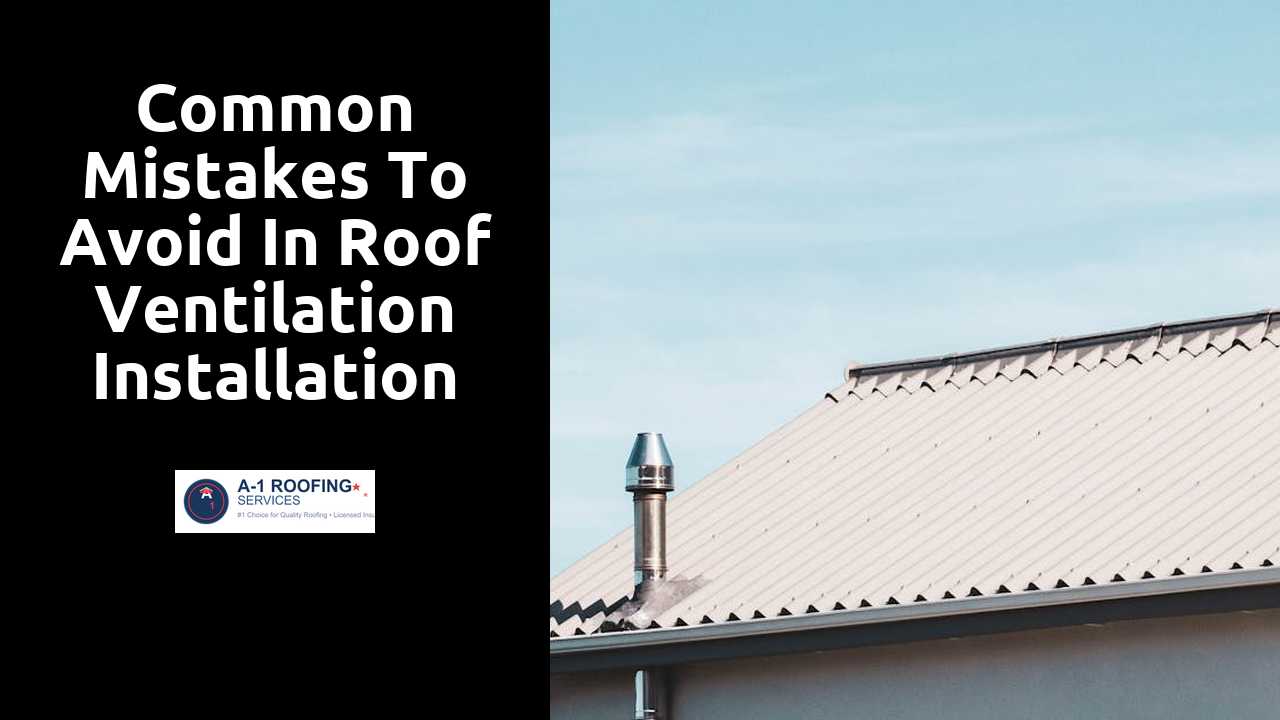
Common Mistakes to Avoid in Roof Ventilation Installation
Table Of Contents
Improper Installation Techniques
Inadequate sealing around vents can lead to significant energy loss, allowing heated or cooled air to escape. This not only affects the efficiency of HVAC systems but can also result in moisture issues that may damage roofing materials and insulation. Ensuring a tight seal helps maintain optimal airflow and temperature control, crucial for prolonging the lifespan of the roof and the overall structure.
Using the incorrect type or amount of ventilation can create imbalances in airflow. Over-ventilating can lead to excessive drafts, while under-ventilating may cause stagnation and moisture buildup. It's essential to calculate the necessary ventilation based on the roof type, climate, and specific building needs to achieve a well-functioning system that promotes longevity and efficiency.
See here for more great tips.
Common Installation Errors to Avoid
One prevalent error in roof ventilation installation is neglecting to properly seal joints and seams. This can lead to air leaks, reducing the efficiency of the system. Additionally, failing to align vents with the existing airflow patterns can cause blockages. These oversights often result in wasted energy and increased utility costs.
Another common mistake is disregarding the number of vents needed for adequate circulation. Overlooking the specific requirements based on the size and style of the roof can create areas of stagnant air. Installing insufficient or improperly sized vents may not facilitate proper airflow, leading to issues such as moisture accumulation and increased risk of mold growth.
Ignoring Local Building Codes
Building codes exist to ensure safety, efficiency, and overall structural integrity. Many homeowners may overlook these regulations during the roof ventilation installation process. Skipping compliance can lead to significant issues down the line, such as increased energy costs or reduced effectiveness of the ventilation system. Local authorities often implement specific guidelines tailored to regional climate conditions and building practices, which are critical for optimal performance.
Failure to adhere to these codes can result in fines or the requirement to redo the installation entirely. Proper permits are necessary to avoid complications during inspections. Getting familiar with local requirements not only helps avoid legal ramifications but also enhances the safety and longevity of the roofing system. It is essential to engage with professionals who understand the importance of these regulations and can guide homeowners through compliant installation practices.
Importance of Compliance in Installation
Adhering to local building codes is crucial when installing roof ventilation systems. These regulations ensure that installations meet safety standards and promote energy efficiency. Ignoring these codes can lead to significant problems such as increased energy costs and potential hazards. In some cases, failure to comply may result in fines or mandated removal of improperly installed systems.
Complying with local guidelines guarantees that the ventilation system functions optimally for the structure and its environment. Each region has unique weather patterns and building practices, making it essential to follow the specific codes applicable to the area. This compliance not only secures the owner's investment but also contributes to the overall well-being of the home.
Not Considering Seasonal Changes
Many homeowners overlook the impact of seasonal changes on roof ventilation systems. Different climates present unique challenges that can greatly affect airflow and temperature regulation within the attic space. For instance, during harsh winters, insufficient ventilation can trap moisture, leading to ice dam formation and potential water damage. Meanwhile, hot summer months may exacerbate heat buildup, increasing energy costs for cooling systems.
Adjusting ventilation strategies to align with seasonal variations is crucial for optimal performance. Homeowners should assess the specific needs of their roofs as temperatures fluctuate throughout the year. Incorporating features like adjustable vents or additional insulation can help maintain an efficient ventilation system, ensuring comfort and longevity. Making these considerations during installation can ultimately save on repairs and energy expenses in the long run.
Adapting Ventilation for Climate Variations
Climate plays a significant role in determining the effectiveness of roof ventilation systems. Regions with high humidity levels may require additional exhaust vents to prevent moisture buildup, while areas with extreme heat might benefit from more intake vents to facilitate cool air circulation. Understanding the specific weather patterns and seasonal changes in your area is essential. The right balance of intake and exhaust can enhance energy efficiency and prolong the lifespan of roofing materials.
Adjustments to ventilation systems should not be considered a one-time effort. During seasonal transitions, regular evaluations of roof ventilation can uncover potential issues arising from shifting temperatures and humidity levels. In colder months, attention to potential ice dam formation becomes crucial, while summer heat can lead to a greater reliance on passive cooling strategies. By proactively adapting ventilation to suit the changing climate, homeowners can maintain a comfortable indoor environment and protect their investment.
Related Links
How Roof Ventilation Affects Indoor Air QualityBenefits of Continuous Roof Ventilation for Homeowners